Detailed analysis of the Sony DSC-P150 images, from Imatest(tm)
I've recently begun using Norman Koren's excellent "Imatest" analysis program for quantitative, thoroughly objective analysis of digicam test images. I highly commend it to our technically-oriented readers, as it's far and away the best, most comprehensive analysis program I've found to date. (And with an introductory price of only $59, it's hard to beat.)
My comments below are just brief observations of what I see in the Imatest results. A full discussion of all the data Imatest produces is really beyond the scope of this review: Visit the Imatest web site for a full discussion of what the program measures, how it performs its computations, and how to interpret its output.
Here's some of the results produced by Imatest for the Sony DSC-P150:
Color Accuracy
For the most part, the P150's color accuracy is better than average, with correct hue and saturation for most areas of the spectrum. The obvious exceptions are the reds and greens, which are somewhat oversaturated. Yellows and oranges are very slightly undersaturated. The oversaturation is shown by the extent to which the circles (camera color) are displaced outward (higher saturation) relative to the ideal values (squares). On average, color saturation of swatches on the MacBeth ColorChecker(tm) chart are 110.2% of their ideal values. (An average oversaturation of 10.2%.) Some oversaturation is very common for consumer digicams, as truly accurate color looks somewhat flat to most people. The DSC-P150's oversaturation is a actually on the low side of average, among the cameras I've tested.
In actual shooting with the P150, I found its colors to be very believable
and appealing. Like many Sony digicams, it seems to do a particularly nice
job on skin tones. Nice-looking color overall...
Color Analysis
These images show the color behavior of the P150 directly. In each color swatch, the outer perimeter shows the color as actually captured by the camera, the inner square shows the color after correcting for the luminance of the photographed chart (as determined by a 2nd-order curve fit to the values of the gray swatches), and the small rectangle inside the inner square shows what the color should actually be, based on perfect rendering to the sRGB color space.
In this chart, it's a little hard to see how the P150's hues correspond to
the ideal values, because the luminance correction for the image as a whole
left the color swatches for the P150 a fair bit darker than the ideal target.
Gray Patch Tone and Noise Analysis
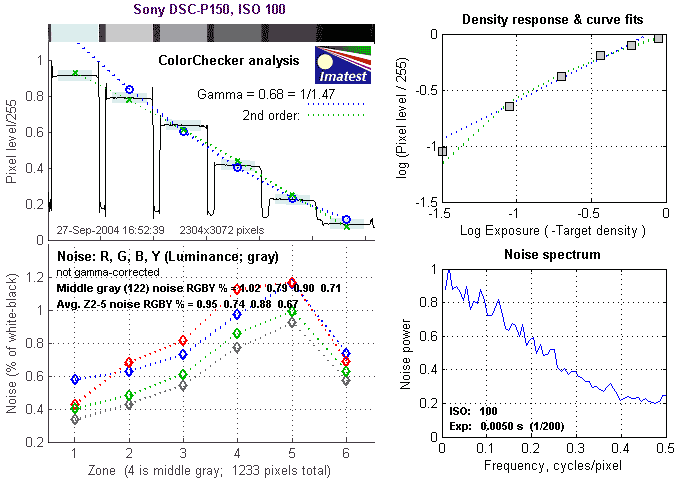
There's a lot in this particular graph, a lot more than I have room to go into
here. Bottom line, the P150's noise levels are lower than average across the
board, and its noise spectrum is fairly fine-grained as well. The camera also
doesn't seem to use quite such heavy-handed anti-noise processing as many of
its competitors, so there's less subtle detail lost than in the images of many
consumer digicams. (And particularly as compared to the images from the DSCX-P100.)
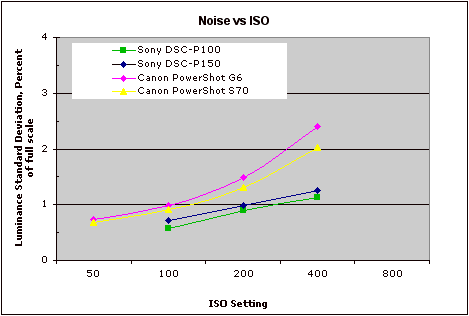
This chart compares the Sony DSC-P150's noise performance over a range of ISOs
against that of other cameras. As you can see, the P150 is cleaner than average
across the board. The P150 shows slightly noise levels here than its sibling
the P100, but the really huge difference between the two cameras doesn't show
here: The P100 throws away horrendous amounts of subject detail to achieve its
low noise figures, while the P150's images show relatively little detail loss.
All in all, the P150 delivers very crisp, sharp images, with lower than average
image noise for its 7-megapixel class.
The chart above shows consolidated results from spatial frequency response
measurements in both the horizontal and vertical axes. The "MTF 50"
numbers tend to correlate best with visual perceptions of sharpness, so those
are what I focus on here. Here, we see the summary results of what's shown in
the two remaining graphs below. The P150 tends to oversharpen its images somewhat,
so its uncorrected resolution results here are higher than ones corrected to
use a standard 1-pixel sharpening profile. The uncorrected resolution figures
are 1905 line widths per picture height in the horizontal direction (corresponding
to the vertically-oriented edge), and 1705 along the vertical axis (corresponding
to the horizontally-oriented edge), for a combined average of 1806 LW/PH. Correcting
to a "standardized" sharpening with a one-pixel radius decreases this
number a fair bit, to an average of 1308 LW/PH, still a good level. (This is
a little below the results produced by the best 7-megapixel cameras (the Canon
G6 averages 1523 LW/PH in this test), but still very good indeed for a compact
model.
For the real techno-geeks, the two plots below show the actual edge response
of the P150, for horizontal and vertical edges. (These show the over-sharpening
of the P150, seen in the amount of overshoot in the luminance curves.):
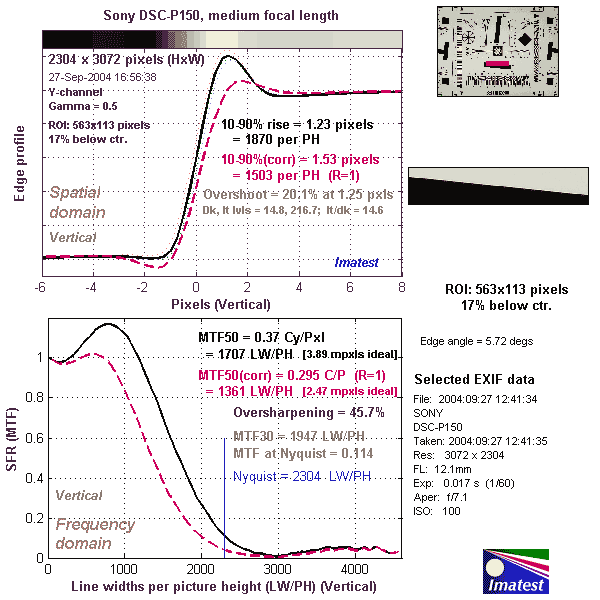
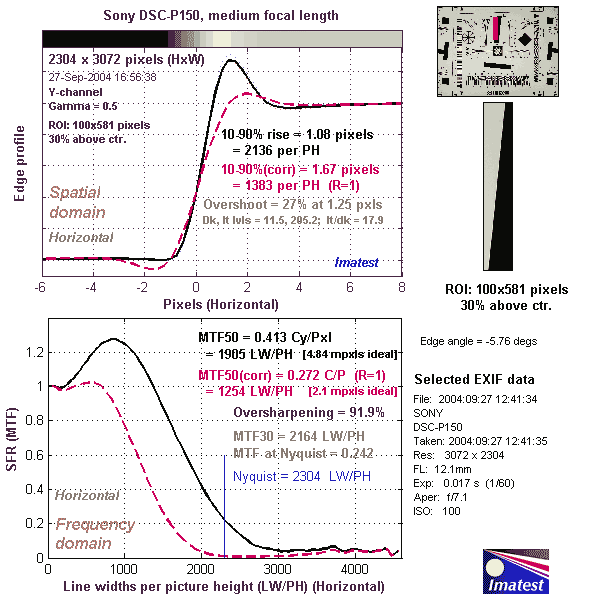
P150 Test Images
P150 Imatest Results
P150 Specifications
P150 "Picky Details"
Up to Imaging Resource digital cameras area
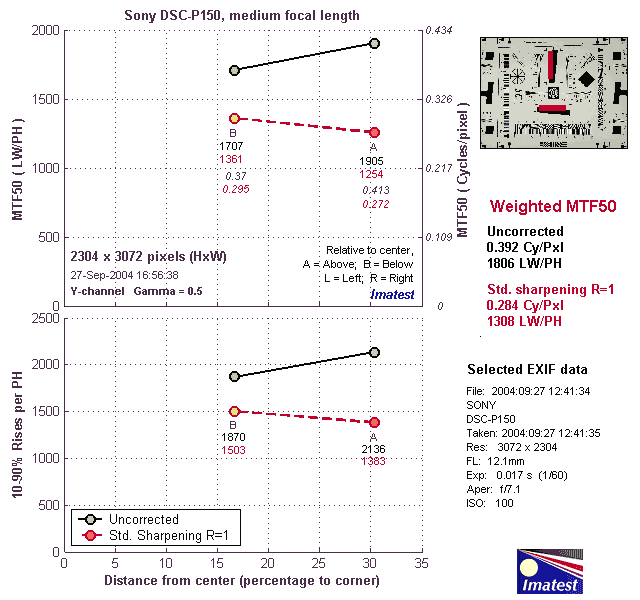

Follow Imaging Resource: